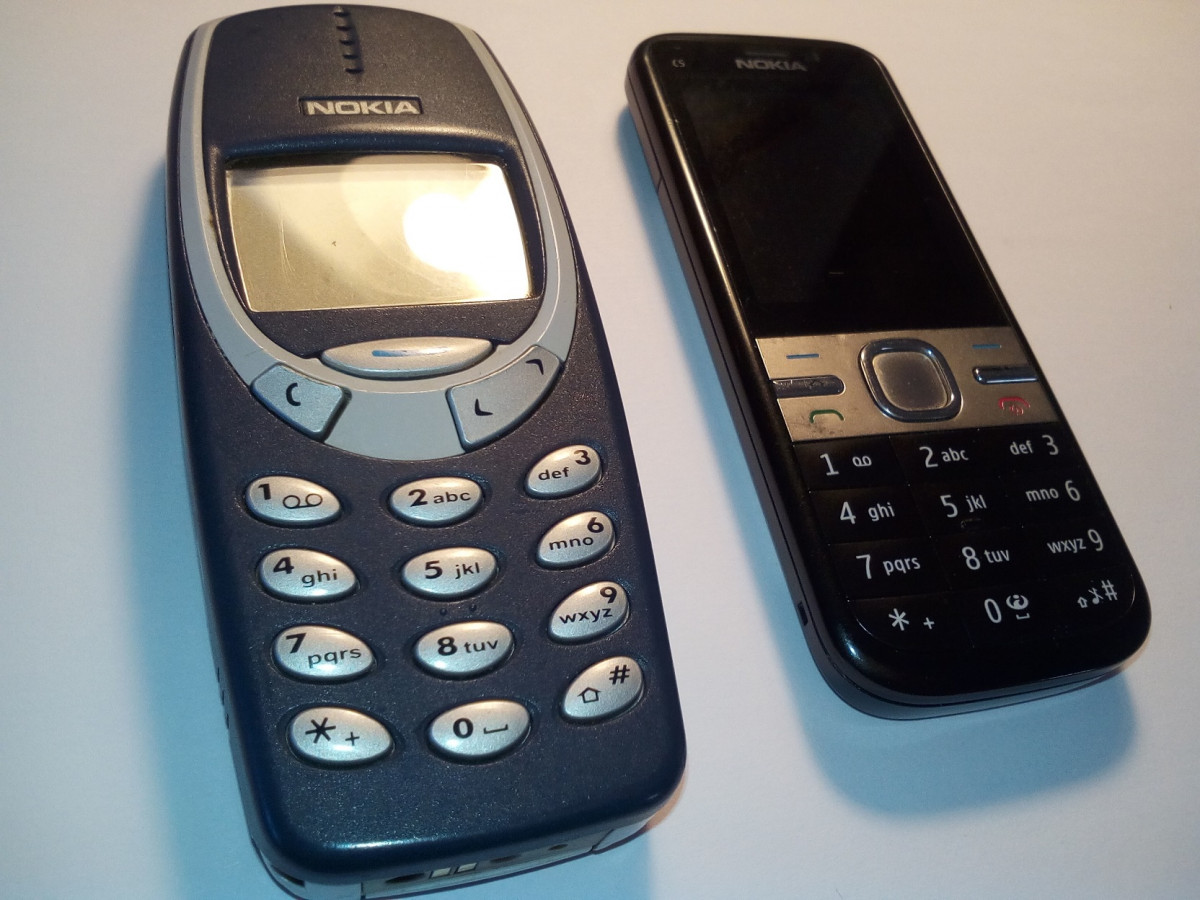
# 0029
Nokia 3210 and Nokia C5-00
Artefact, Assemblage of Things, Common, Purchased, Private Space, Metal (copper, iron, alloys, steel, etc.), Centuries
Socio-cultural Data
Historical Uses
The Finnish company Nokia created a vast range of affordable, usable and highly distinctive mobile phone designs in the late 1990s and early 2000s, moving into early smart phones and developing GSM, 3G, LTE standards that created a world leader in mobile telecommunications.
Historical Impact
For Finns, Nokia changed their domestic economic landscape and put Finland on the world map of telecommunications. The cultural and economic impact of Nokia was enormous, so it was an equally large shock when Nokia sold their mobile telecommunications division to Microsoft Mobile in 2014.
Present Uses
Both these phone models, even though they are 22 and 11 years old, respectively, are still usable today. The Nokia C5-00 is classified as an early smart phone but, clearly, has very limited features compared to the latest generation of 5G phones from various manufacturers. Today, Nokia concentrates on building 5G networks.
Technical Data
Class of Material
Metal (copper, iron, alloys, steel, etc.)
Bio-temporal-geographical Data
Residence time (How long does the matter/material/artefact stay in an unaltered state in the location/context/system before it decay?)
Centuries
How does the item affect the environment in which it exists?
Harm it
Ontological-cosmological Data
ambivalence
How would you like to be with this artefact/material/living thing/matter?
I would like to see both these phones fully recycled, with all useful minerals and metals recovered for using in new generations of telecommunications or IT products.
What can humans give back to this artefact/material/living thing/matter?
We can give it back to Nokia to recover and recycle all components so they reduce their harm to the environment. The company produced hundreds of thousands of phones yet despite legislation in the European Union (the Waste Electrical and Electronic Equipment - WEEE - Directive became law in 2002 and was tightened in 2012) most waste is exported for treatment outside the EU. This needs to change.